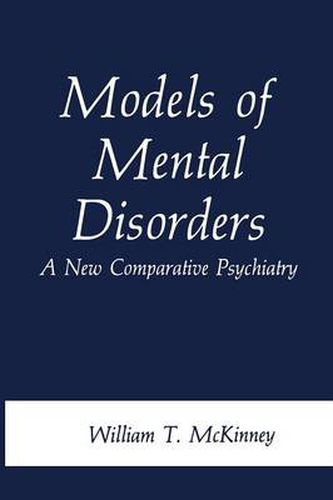Readings Newsletter
Become a Readings Member to make your shopping experience even easier.
Sign in or sign up for free!
You’re not far away from qualifying for FREE standard shipping within Australia
You’ve qualified for FREE standard shipping within Australia
The cart is loading…






This title is printed to order. This book may have been self-published. If so, we cannot guarantee the quality of the content. In the main most books will have gone through the editing process however some may not. We therefore suggest that you be aware of this before ordering this book. If in doubt check either the author or publisher’s details as we are unable to accept any returns unless they are faulty. Please contact us if you have any questions.
My ideas for this book have been evolving over the last several years as I have been working in the animal modeling area and have seen it change rather dramatically. There have been tremendous advances, both in methodology and in conceptualization, yet the literature is scattered in journals encompassing many disciplines. In particular, there have been only very limited attempts to write about the philosophical, conceptual, and controversial issues in this field; to pull together diverse findings; and to provide some general perspective on its future. As will probably be apparent, I am a clinical psychiatrist who also has a fundamental interest in animal behavior, especially primate social behavior. I entered the field from a clinical research standpoint to devel op some animal models of depression after being stimulated to do so by Dr. William Bunney, then at the National Institute of Mental Health and now at the University of California-Irvine. The field has grown rapidly since then and there is considerable research activity. Indeed, the re search activity has grown more rapidly than our conceptualization of what animal models are and are not. Animal preparations are now available for studying specific aspects of certain types of psychopathology. Thoughtful workers in the animal modeling field no longer talk about comprehensive models but rather about more limited experimental preparations in animals for studying certain specific aspects of human psychopathology.
$9.00 standard shipping within Australia
FREE standard shipping within Australia for orders over $100.00
Express & International shipping calculated at checkout
This title is printed to order. This book may have been self-published. If so, we cannot guarantee the quality of the content. In the main most books will have gone through the editing process however some may not. We therefore suggest that you be aware of this before ordering this book. If in doubt check either the author or publisher’s details as we are unable to accept any returns unless they are faulty. Please contact us if you have any questions.
My ideas for this book have been evolving over the last several years as I have been working in the animal modeling area and have seen it change rather dramatically. There have been tremendous advances, both in methodology and in conceptualization, yet the literature is scattered in journals encompassing many disciplines. In particular, there have been only very limited attempts to write about the philosophical, conceptual, and controversial issues in this field; to pull together diverse findings; and to provide some general perspective on its future. As will probably be apparent, I am a clinical psychiatrist who also has a fundamental interest in animal behavior, especially primate social behavior. I entered the field from a clinical research standpoint to devel op some animal models of depression after being stimulated to do so by Dr. William Bunney, then at the National Institute of Mental Health and now at the University of California-Irvine. The field has grown rapidly since then and there is considerable research activity. Indeed, the re search activity has grown more rapidly than our conceptualization of what animal models are and are not. Animal preparations are now available for studying specific aspects of certain types of psychopathology. Thoughtful workers in the animal modeling field no longer talk about comprehensive models but rather about more limited experimental preparations in animals for studying certain specific aspects of human psychopathology.